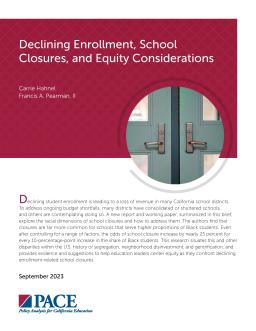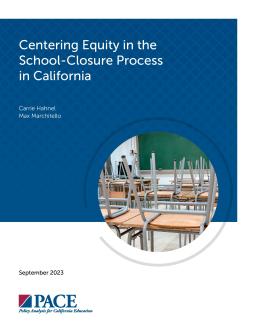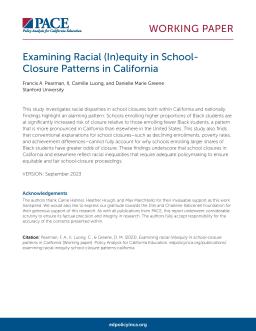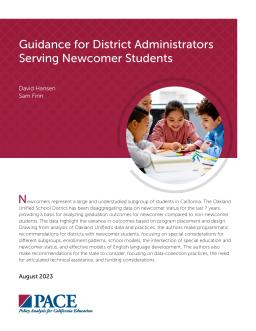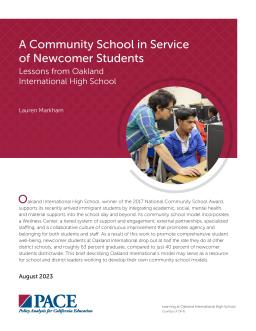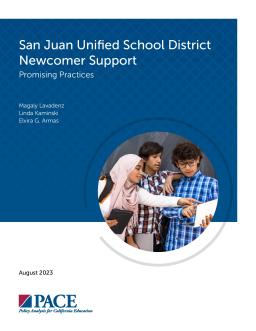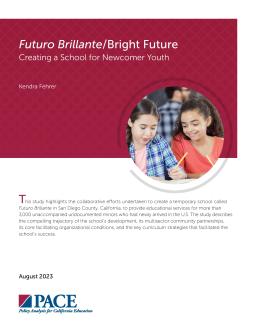September 2023 | Policy brief
Declining student enrollment is leading to a loss of revenue in many California school districts. To address ongoing budget shortfalls, many districts have consolidated or shuttered schools,and others are contemplating doing so. A new report and working paper, summarized in this brief, explore the racial dimensions of school closures and how to address them.
September 2023 | Report
Enrollment in California public schools has been declining and is projected to fall even more steeply during the next decade. Because funding for school districts is largely based on average daily attendance rates, a decline in enrollment results in a loss of funding. To address budget shortfalls and align services with student counts, many districts have consolidated or closed schools, or they are contemplating doing so.
September 2023 | Working paper
This study investigates racial disparities in school closures both within California and nationally. Findings highlight an alarming pattern: Schools enrolling higher proportions of Black students are at significantly increased risk of closure relative to those enrolling fewer Black students, a pattern that is more pronounced in California than elsewhere in the United States. The findings underscore that school closures in California and elsewhere reflect racial inequalities that require adequate policymaking to ensure equitable and fair school-closure proceedings.
August 2023 | Policy brief, Case study, Guide
Newcomers represent a large and understudied subgroup of students in California. The Oakland Unified School District has been disaggregating data on newcomer status for the last 7 years, providing a basis for analyzing graduation outcomes for newcomer compared to non-newcomer students. The data highlight the variance in outcomes based on program placement and design. Drawing from analysis of Oakland Unified’s data and practices, the authors make programmatic recommendations for districts with newcomer students.
Lessons From Oakland International High School
August 2023 | Policy brief, Case study
Oakland International High School, winner of the 2017 National Community School Award, supports its recently arrived immigrant students by integrating academic, social, mental health,and material supports into the school day and beyond. Its community school model incorporates a Wellness Center, a tiered system of support and engagement, external partnerships, specialized staffing, and a collaborative culture of continuous improvement that promotes agency and belonging for both students and staff.
Promising Practices
August 2023 | Case study, Report
This case study identifies promising practices for newcomer education implemented in San Juan Unified School District (SJUSD), one of 12 local educational agencies (LEAs) funded under the California Newcomer Education and Well-Being (CalNEW) project between 2018 and 2021. This report was developed through a partnership between PACE and the Center for Equity for English Learners (CEEL) at Loyola Marymount University (LMU).
Creating a School for Newcomer Youth
August 2023 | Policy brief, Case study
This study highlights the collaborative efforts undertaken to create a temporary school called Futuro Brillante in San Diego County, California, to provide educational services for more than 3,000 unaccompanied undocumented minors who had newly arrived in the U.S. The study describes the compelling trajectory of the school’s development, its multisector community partnerships, its core facilitating organizational conditions, and the key curriculum strategies that facilitated the school’s success.
Pagination
- Previous page
- Page 3
- Next page
